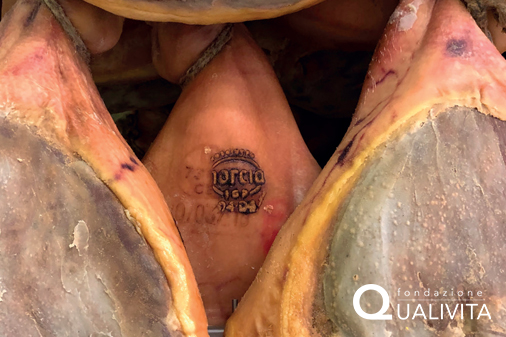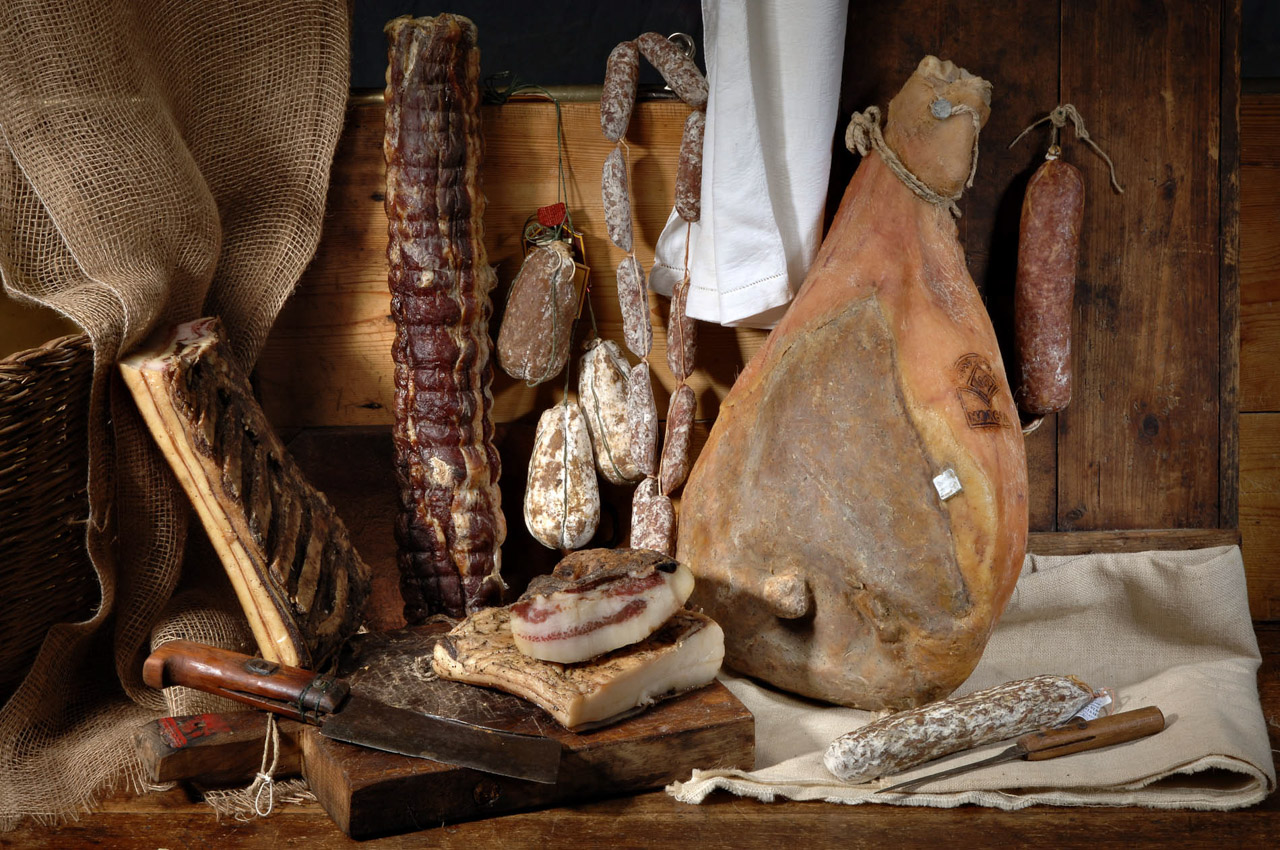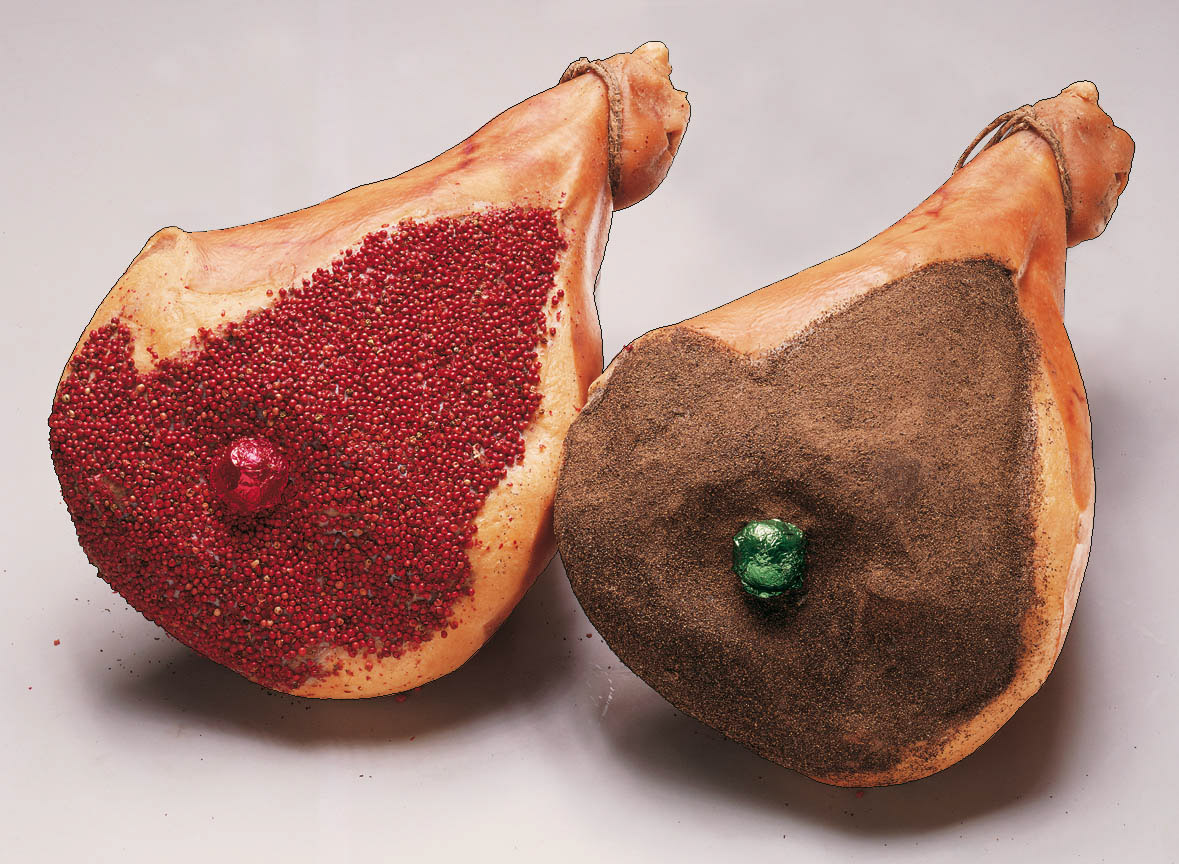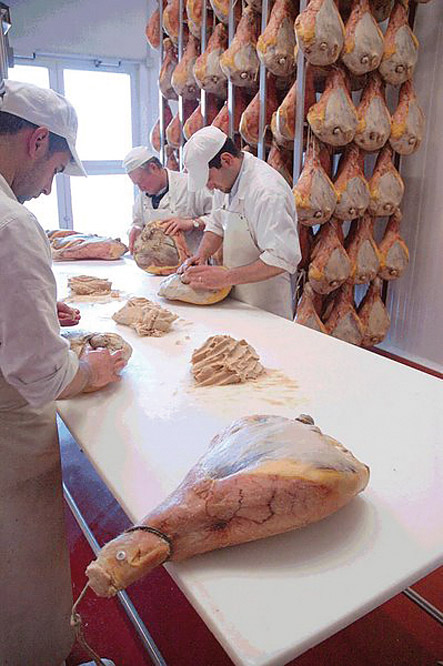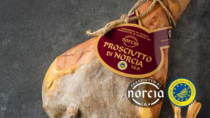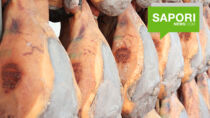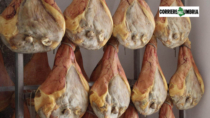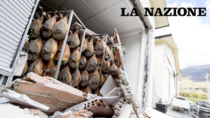Description
Prosciutto di Norcia PGI is a raw, cured charcuterie product obtained through the processing of fresh legs of pigs, generally the offspring of sows belonging to the Large White and Italian Landrace, Duroc or other breeds considered compatible with the Italian heavy pig.
Production Area
The production area of Prosciutto di Norcia PGI is within the municipalities of Norcia, Preci, Cascia, Monteleone di Spoleto and Poggiodomo, all of which are 500 m.a.s.l., in the Province of Perugia, in the Umbria region.
Production Method
After slaughtering, the legs are refrigerated for 24 hours before being trimmed to form “squares”. The legs are salted twice, using medium-grained sea salt, after which they are desalted and left to rest for two and a half months. The legs of ham are then washed and dried before the “sugnatura, which involves the surface of the flesh and the cracks being covered with the "sugna", a paste of pig fat and rice flour. The curing process takes place in rooms specifically equipped to allow for sufficient exchange of air. The curing period, from salting to the product being made available for consumption, cannot be less than 12 months, even for larger legs. At the end of the curing period, the hams which are considered to be of the right quality are fire-branded with the words “Prosciutto di Norcia”.
Appearance and Flavour
Prosciutto di Norcia PGI has a characteristic rounded pear shape and no trotter. The weight is usually no less than 8.5 kg. On slicing, it is pinkish to red in colour, with a sapid, but not salty flavour. The fragrance is characteristic and slightly spicy due to the small amount of pepper.
History
In the Nursino area, the preservation of pig meat dates back to the time of the Romans, a practice that was also promoted by the widespread pig farms and pastoralism characteristic of the area. These activities made it possible for the land to be used in a more rational and continuous way, even in the colder seasons. Furthermore, during the periods of the Roman Republic and Roman Empire, these practices led to the promotion of a policy for the valorization of the countryside, which was later supported by the Papal States. The origins of Prosciutto di Norcia PGI also seem to date back to the Roman era. In his De Agri Cultura, which was compiled in around 160 BC, Marcus Porcius Cato, also known as the Censor, illustrated salting and preserving processes for hams produced in Norcia, in what could almost be considered a product specification. Over time, the farmers in this area became skilful and expert in the processing and conserving of pork, which was also sold salted and cured in neighbouring areas.
Gastronomy
Whole Prosciutto di Norcia PGI should be kept in a cool, dry place, greasing the cut surface with a little oil and covering it with cling film or foil. The ham should be sliced by hand shortly before serving. Once cut, it should be kept in the refrigerator. Prosciutto di Norcia PGI has a delicate taste and is therefore best eaten in thin slices, as a starter or main course. It pairs perfectly with full-bodied red wines from the region and other typical Umbrian products, especially cheeses, unsalted bread and several types of seasonal fresh fruit.
Marketing
The product is marketed as Prosciutto di Norcia PGI. It is sold whole, deboned, in pieces or sliced, unpackaged, vacuum-packed or in modified atmosphere packaging.
Distinctive Features
During the curing process, the protein molecules are broken down into individual amino acids, making it ideal for sportspersons and children.





